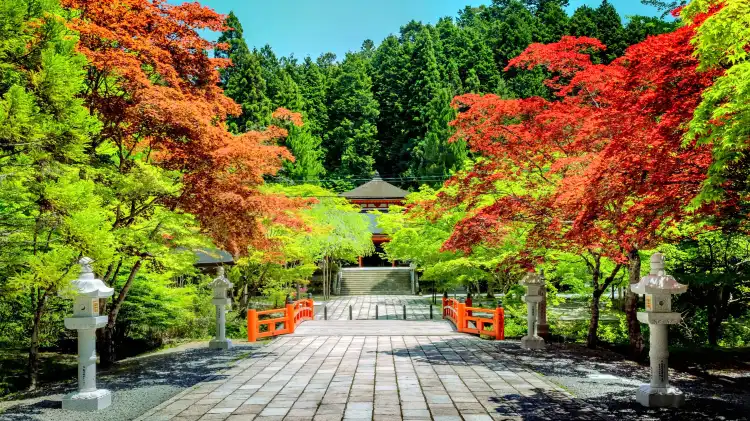
Odkryj pobyt w mieście Koya
Wprowadź daty podróży, aby sprawdzić aktualne ceny i dostępność
Przesuń w górę, aby zobaczyć więcej
Filtruj według:
Liczba gwiazdek hotelu
≤2345
Popularne filtry
Niesamowity 4,5+Świetny 4,0+Dobry 3,5+Przyjemny 3,0+Znaleźliśmy dla Ciebie hotele (22) w mieście Koya
Wybierz daty podróży, aby zobaczyć aktualne ceny.
Najpopularniejsze
Najniższa cena
Blisko centrum
Najwyżej oceniane
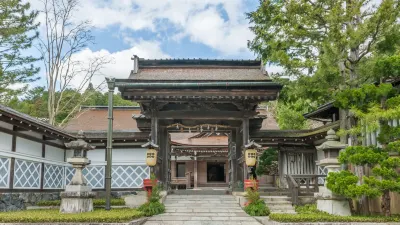
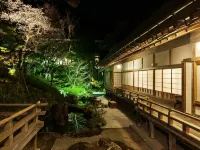

Hotel w pobliżu: Koya
普普成慧德 2024.03.09
The hardware is unique and beautiful! There are two aspects to the software: 1. If you are a true Buddhist, you will feel that the commercial atmosphere is very strong, and the morning and evening classes are irregular. 2. The basic services are not up to standard, such as frozen food. It is disappointing that hot water or water boiling tools are not provided in snowy weather. of!
Outstanding
Oceny: 12
4.6/5
Cena od
2 147 zł
za noc



Hotel w pobliżu: Koya
GGuest User 2022.11.25
It was a very comfortable and wonderful shukubo. The correspondence of the receptionist is good. The care is also wonderful. Access is very good as it is in front of Kongobuji Temple. Convenient to go anywhere. The food is delicious. The morning work experience was also a very good experience. The story of the priest was also very nice, and he spoke in English to foreign customers. I think all the participants had a good experience. I was able to take pictures freely inside the temple, and the priest was good at chatting, so I had fun and had them take pictures together. I think everyone in this temple has a wonderful personality. I was able to eat in my room and relax. The bathhouse explained the rules with illustrations written in English and Japanese to foreigners. The way to wear yukata was also drawn. It was posted in an easy-to-understand place, so I think foreign customers will read it properly. It was a nice shukubo with consideration and hospitality. I definitely want to go again. Check-out is 10:00, so I was grateful that the shops and temples were open. I really recommend this place.
Excellent
Oceny: 48
4.5/5
Cena od
1 706 zł
za noc



Hotel w pobliżu: Koya
杨杨 2018.10.08
I drove for three hours in the morning and arrived at Koyasan from Kyoto. The temperature on the mountain was 5 or 6 degrees cooler than Kyoto. We stayed at Huiguangyuan, a 1000-year-old Buddhist monastery. The temple has traditional Japanese-style rooms and beautiful gardens. The meals are Buddhist and vegetarian, and the service staff are monks, making people feel the Japanese Buddhist culture. The morning morning there was a Buddhist morning class and meditation activities. [Konoyama] On the altar, Kalan - Jingangfeng Temple - Huiguangyuan. Koyasan is the ancestral ancestor of Dongmi Mang, and was founded by the master of Hongfa in the 7th year of Hongren (816). Legend has it that the Master of the Seas was willing to find a lotus sacred place like Wutai Mountain in China to promote the Dharma. When the line went to Gaoye Mountain, a pair of white dogs and black dogs led the way. The Masters of the Sea followed them to discover the eight peaks around the Gaoye Mountain, so they were Here you build your own dojo, which has been passed down to the present. The altar on the altar is the center of the entire Gaoye Mountain, and it is also the place where the empty sea masters first built the temple. The Jingangfeng Temple is the largest temple in Koyasan. It was originally built by Toyotomi Hideyoshi in 1593, and was renamed as the King Kong Temple in the Meiji era.
Outstanding
Oceny: 40
4.6/5
Cena od
1 322 zł
za noc

Możesz preferować
Hotele ze śniadaniemHotele z pokojem z 2 łóżkami 1-osobowymiHotele z 1 podwójnym łóżkiemHotele z basenemHotele z bezpłatnym anulowaniem



Hotel w pobliżu: Koya
GGuest User 2023.12.11
The first time in Sufang, the experience of moving the hospital was very good. The moving hospital was built in 906, and it was dedicated to the king of the Ming Dynasty. The bird feather emperor and queen of the Ping An era were buried in this hospital. At present, 14 rooms are provided, 3 room types, 4 without bathrooms, 8 bathrooms, and 2 bathrooms. This stay is with a bathroom and the room is comfortable and clean. The public bathroom experience is also very good. Breakfast and dinner are very good. In a very beautiful and elegant room, the dining location and meals are arranged in advance, and the waiter will lead the room. Many Sufangs in Gaoye Mountain are facing the street, the courtyard is not facing the street, quiet and chic, a short walk from the bus station.
Outstanding
Oceny: 31
4.7/5
Cena od
2 008 zł
za noc


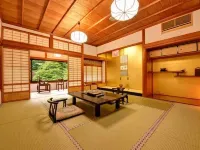
Hotel w pobliżu: Koya
何何 2019.12.10
Sufang is the most anticipated part of the formation of Koyasan. The so-called Sufang is actually living in a temple to experience the practice. There are more than 100 temples in Koyasan, and dozens of them are open to tourists.
It is different from the small Japanese-style houses in ordinary hotels. In addition to being located in the mountains, there are also practice experiences such as eating fast, morning classes, and copying scriptures.
In the morning class starting at 6:00, the sky was still dark. In December, Koyasan was already very cold. When I saw the girls next to me, they were very cold.
The monk's chanting calmed the mood. Around the lobby of the morning class, this temple is dedicated to the spiritual position of the people. Compared with the mysterious sense of religious rituals in Japan, and Japan with frequent natural disasters, religion seems more secular to ordinary people. It is noticed that when monks recite scriptures, the instruments used to make sounds are used quite frequently. This is probably why there is music such as Buddhist electronic sounds in Japan.
Zhaifan is quite exquisite. The combination of ingredients also takes a lot of effort. The monks do not eat meat and rely on soy products to supplement protein. The tofu made by Koyasan has also become a local famous thing. After breakfast, dinner is not wasted.
There is a public bathroom that can be used for soup, there is a public smoking area on the first floor, and a wine list is optional. Unlike the imagination before the visit, the monk who received our English communication was ok, warm and gentle.
Although Sufang's experience was more secular than expected, living in the headquarters held a good memory of the trip to Koyasan.
Excellent
Oceny: 30
4.4/5
Cena od
903 zł
za noc

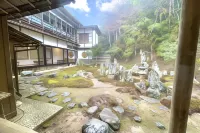

Hotel w pobliżu: Koya
GGuest User 2023.11.17
We stayed at this temple for one night and it was worth it. You have a vegan breakfast and dinner cooked for you whilst you stay in a traditional Japanese style room. Location wise, it was perfect for us. The cemetery is about a 20-25 minute walk which isn’t too bad as you explore the area anyway. The monks were very welcoming and I had a fun conversation with one about football (they love Tomiyasu and Mitoma). They spoke English very well and I could communicate easily, even one monk who couldn’t speak much English just pulled out his phone and used translator to speak. In the morning, you’re invited to join their morning prayers which is a unique experience. It’s about 30 minutes long and certainly something you don’t want to miss. Some things to be aware of is, for us, we had the option of having dinner served at either 5 or 5:30pm. Dinner for the most part was tasty and delicious. I’m open minded and willing to try things I wouldn’t normally have - but I can imagine picky eaters not enjoying some of the dishes. Also, curfew is around 9pm. They literally shut the temple doors. So be careful about doing night tours of the cemetery that start at 7. (We went on our own accord as it was dark by 5pm anyway)
Excellent
Oceny: 41
4.5/5
Cena od
4 714 zł
za noc



Hotel w pobliżu: Koya
GGuest User 2023.08.21
We stayed for one night. The location really is magic, our room was comfortable and it was nice to attend the early morning ceremony before breakfast. The time for dinner was really early and strict (17:45!) but it's recommended to eat in because everything around there closes early. Even if the curfew was at 21, the staff sent as away from the common spaces where we were quietly enjoying the night view at 20:20, while they let a loud group in the entrance disturb everyone until 21:30, so I was a bit upset for this. I enjoyed the onsen but it was very small, I was lucky it wasn't crowded because no more than 4 people can fit in. I personally liked the vegan dinner and breakfast, beautifully presented, but it's not for every stomach and nobody tells you what you are eating (they only told us ”this is rice, tea and watermelon”, we could guess ourselves lol). In the complex, the experience was good and I recommend it, but it's a bit too expensive for what they offer.
Excellent
Oceny: 41
4.4/5
Cena od
864 zł
za noc

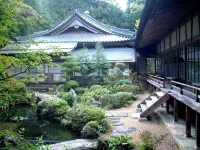

Hotel w pobliżu: Koya
GGuest User 2023.12.24
The Zhimingyuan has a history of more than 900 years, and there are many rooms in Sufang. The room facilities are simpler, the public bathroom, breakfast and dinner will be delivered to the room, very delicious. The winter room is quite warm. There is a beautiful garden in the inner courtyard. The room facing the garden on the first floor should not be too beautiful, but unfortunately ours is on the second floor. On the top of the end of a corridor in the monastery, I accidentally saw the poems left by President Zhao Puchu when he attended the 1150th anniversary of the Air Sea Into the Sea in 1985.
Outstanding
Oceny: 5
4.8/5
Sprawdź dostępność



Hotel w pobliżu: Koya
GGuest User 2023.07.02
It is located near Ichinohashi, the entrance to the approach to Okunoin on Mt. Koya. It was founded by Kobo Daishi during the Tencho era (824-834). Koyasan Shingon Buddhism head temple. The principal object of worship is Hatsukaichi Daishi (a wooden statue made by Kobo Daishi). Book a shukubo on Rakuten Travel. There are two types of rooms: fusuma partitions and wall partitions. None of the rooms have baths and toilets. There are options for meals such as none / breakfast only / 2 meals, dinner 2 meals / 2 meals, dinner 3 meals. Select the plan (16,500 yen) of ”wall partition room, 2 meals and 3 dinners”. I was assigned to the farthest room, two rooms of 6 tatami mats + 4.5 tatami mats. It is true that the partition from the next room is a wall, but the partition from the corridor is a fusuma and shoji door. That is, there is no key. There is a fan in the room, but there is no air conditioner, so it may be difficult to stay in the middle of summer. Amenities include face towels, bath towels, and toothbrushes. There are 3 karans in the shared bath. The bathtub is made of cypress (probably) and is the size that about 3 people can enter at the same time. It's different from a ryokan, so you shouldn't expect a large bath. However, it is annoying that hot water only trickles out from the callan/shower. The morning service starts at 6:30 at Reihido. You can sit on a chair and listen to the sutras chanted by the monks. There is a tour that guides you through the hall and you can take pictures. Part of the building was built about 170 years ago, and was used as a reference when reconstructing Kongobu-ji Temple. There is also a goma tree attached, and you can experience the goma practice that starts at 13:00. This was my first experience at a temple lodging, so I don't know if this was standard, but it was certainly a valuable experience.
Outstanding
Oceny: 27
4.6/5
Sprawdź dostępność



Hotel w pobliżu: Koya
At NIPPONIA KOYASAN Operated by KIRINJI, exceptional service and top-notch amenities create a memorable experience for guests. Complimentary internet access is available in the country house to ensure you stay connected during your visit.For guests with their own vehicle, parking facilities are provided. Continuously receive the support you require through front desk amenities such as express check-in or check-out.Due to health concerns, smoking is strictly prohibited within the entire premises of country house. For the health and well-being of all guests and staff, smoking is restricted exclusively to assigned zones.Accommodations come equipped with all the conveniences required for a restful night's slumber. A selection of rooms feature linen service, blackout curtains and air conditioning to ensure your comfort and convenience.In certain chosen rooms, a refrigerator is conveniently available for your use. In the country house, certain guest bathrooms come equipped with essential bathroom amenities, such as a hair dryer, toiletries and towels, ensuring a comfortable stay for guests. At NIPPONIA KOYASAN Operated by KIRINJI, each day commences with a scrumptious breakfast offered at no additional cost.
Very Good
Oceny: 2
4.2/5
Cena od
929 zł
za noc
Jak podróżni oceniają atrakcje w: Koya
Odkryj te miejsca, które warto odwiedzić w mieście Koya i wybierz pobliski hotel dla większej wygody
Koyasan
11180957907The Buddhist holy place in Japan is the main temple of Kobo Daishi. We visited in the autumn when the red leaves were very beautiful on both sides of Omotesando. It is a famous place for viewing red leaves in the island country. Kongobuji Temple was built by Kobo Daishi. You can visit it in slippers. It is also a world cultural heritage.
Oku-no-In
空空空CJWe only stayed one night in Kaohsiung Mountain, and if you are, I suggest you visit the cemetery when you arrive in the afternoon and leave the main road to see everything. Then, at night, I suggest joining the night tour arranged by the Shenhu Temple. This allows you to see the cemetery at night and learn about it through your monk guide. However, night tours must take the main road, and at night you won’t see all the details.
Kongobu-ji
宇宇喜多信家1I think it is a very good temple. If you listen to the explanation of the guide, you can understand how Buddhist monks live here. There is a tea room that provides free tea. You are not allowed to take pictures inside.
Koya – Często zadawane pytania
Które hotele w: Koya są popularne?
Koya oferuje wiele popularnych hoteli. Zarówno podróżujący służbowo, jak i prywatnie chętnie wybierają Koyasan Saizenin, Koyasan Syukubou Fudouin i Koyasan Rengejoin.
Ile wynosi średnia cena noclegu w: Koya?
Średnia cena hoteli w: Koya w dni powszednie wynosi 1 336 zł, a w weekendy (piątek-sobota) 1 324 zł.
Które luksusowe hotele są polecane w: Koya?
Koya oferuje wiele luksusowych hoteli o różnych stylach. Koyasan Rengejoin jest popularnym wyborem.
Które hotele w: Koya oferują wysokiej jakości śniadania?
Koyasan Rengejoin,Sojiin i Koyasan Saizenin oferują znakomite śniadanie. Zacznij dzień od pysznego śniadania!
Które hotele w: Koya zapewniają zaplecze fitness?
Koyasan Syukubou Fudouin, Koyasan Rengejoin i Fukuchi-IN oferują zaplecze fitness. Nie musisz rezygnować z treningów nawet podczas podróży!
Które hotele w: Koya oferują basen?
Koyasan Syukubou Fudouin, Fukuchi-IN i Sojiin oferują basen. Zatrzymaj się w jednym z tych hoteli, aby korzystać z basenu!
Które hotele w: Koya zapewniają bezpłatne Wi-Fi?
Niezależnie od tego, czy podróżujesz służbowo, czy prywatnie, szybki internet jest niezbędny w podróży. Koyasan Saizenin, Koyasan Syukubou Fudouin i Fukuchi-IN to popularne hotele z bezpłatnym Wi-Fi.
Które hotele w: Koya oferują gorące źródła?
Chcesz skorzystać z gorących źródeł w swoim hotelu? Fukuchi-IN oferuje gorące źródła. Zarezerwuj już teraz!
Które hotele w: Koya oferują transfery lotniskowe?
Pierwszy raz odwiedzasz: Koya? Koyasan Rengejoin, Koyasan Syukubou Fudouin i Sojiin oferują transfery lotniskowe.
Które hotele w: Koya oferują wysoko oceniane SPA?
Doskwiera Ci zmęczenie w podróży? Koyasan Rengejoin i Koyasan Syukubo Kumagaiji oferują wysokiej jakości SPA.
Jakie promocje hotelowe są dostępne w: Koya?
Trip.com oferuje różne promocje i rabaty dla użytkowników przez cały rok. Sprawdź aktualne oferty na stronie promocji w serwisie Trip.com.
Lokalne informacje dla podróżnych
| Najwyższa cena | 9 130 zł |
|---|---|
| Najniższa cena | 233 zł |
| Liczba opinii | 440 |
| Liczba hoteli | 64 |
| Średnia cena (dni powszednie) | 1 336 zł |
| Średnia cena (weekend) | 1 324 zł |